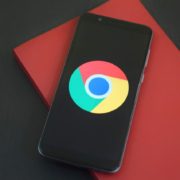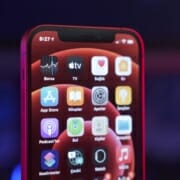5 Reasons To Partner With A Native App Development Agency
What can a native app development agency offer you over a freelancer or a studio that uses hybrid or cross-platform development tools? In short, a native app developer will build your app, ensuring that it closely aligns with the guidelines and hardware specifications of the target platform. The result is an app that offers optimal performance and utilizes the unique features of each platform. Furthermore, the app’s look and feel are native to each platform, i.e., iOS and Android.
That’s not necessarily the result you will get if you hire a freelancer or studio that relies on cross-platform tooling. With freelancers, it’s hard to find developers equally proficient in iOS and Android native app development. Usually, a freelancer will have spent time mastering one of these platforms and only have some familiarity with the other. Nevertheless, it has become more common for freelance developers to use hybrid or cross-platform tools to target both platforms.
But what’s the deal with studios that use cross-platform tools when native app development is better? These studios are either understaffed or don’t have experienced staff on the team to handle native app development. And some more unscrupulous studios are simply trying to cut corners by offering an inferior service to their clients. However, there are cases where some of the more proficient studios know how to work around the pitfalls of cross-platform app development.
At NS804, we don’t have this problem, as we’ve built our reputation and achieved numerous accolades for creating top-quality native mobile apps. As of 2012, we’ve developed over 100 apps in several popular categories like business, entertainment, and productivity. That’s why we’ll reveal several key benefits you’ll enjoy when partnering with a native app development agency.
1. Build Apps That Always Perform At Their Best
We always use the best-in-class programming languages and tools. For iOS development, we use Xcode with the Swift language, and for Android, we use Android Studio with the Kotlin language. In cases with specific project requirements or legacy code, we’ll use Objective-C for iOS apps and Java for Android apps.
Also, we follow the best practices and guidelines set by Apple and Google and ensure that we stay current with our tooling and development methodologies. And that’s important because Apple and Google regularly update their programming languages, integrated development environments (IDEs), and software development kits (SDKs).
By regularly upgrading all of these, we can take advantage of the latest functionality, performance enhancements, and security features of iOS and Android. All this allows us to build apps for our clients that perform at their best upon release. Great-performing apps always satisfy users, leading to positive reviews and ratings on the app stores.
As you’re probably aware by now, a high number of reviews and ratings helps convince potential users to download your app. So, if you’re serious about the overall monetary performance of your app, partnering with a trusted native app development agency is your best bet!
2. Prioritize App Quality And Stability
While your users will be happy with an app that runs great after its first installation — this isn’t enough. Your app must run well consistently in the days, weeks, and months ahead. Nowadays, users are no longer willing to put up with buggy apps that crash on a whim. Mainly because platform holders, mobile device manufacturers, and developers have all upped their game.
But it’s not only a higher bar on quality that you need to be concerned about. Users are far less forgiving than you’d expect regarding app crashes, freezes, or sluggish start-up times. And don’t expect users to go easy on your app because their device warns them about excess memory use, and they decide to close other applications or clear the cache. In such cases, users will delete your app and look for a better alternative.
Consider the following metrics regarding app performance when planning your next project. Recent statistics reveal that users enjoy 99.81% crash-free sessions on Android and 99.93% on iOS. That’s a high percentage for both mobile platforms, so you must work closely with an app development agency to achieve similar or better results for your project.
Furthermore, users receive high memory usage rate warnings at 12.94% on Android and relatively lower at 5.49% on iOS. An agency experienced in developing native Android apps knows how to optimize their code for the Java Virtual Machine (JVM). While the JVM is great for making code portable across a wide range of devices, it’s far heavier on system resources because it must interpret and execute bytecode, unlike machine code that runs on bare metal.
3. Design A User Interface (UI) That Looks And Feels Native
The performance and stability of your app will win over many users. However, the look and feel of your app must be polished if it’s going to retain those users and cause them to recommend it to others. We already know that users are incredibly savvy and have high expectations of what a great app must look and feel like.
Therefore, you can’t rely on design trends that were hot two or three years ago to impress users. Also, don’t implement trailblazing graphic design techniques from the web, print media, or art world into your app. That’s because your app may end up with a design identity that looks too busy, pretentious, or artsy. Worse still, all this may hurt its usability, which is a huge turn-off for most users.
The best and most profitable mobile apps often boast clean and minimal UI design. Take a close look at several of the highest-grossing apps, such as Flipboard, Spotify, and WhatsApp, to see this design paradigm in action. To ensure you design a great UI that looks and feels native on iOS and Android, hire an app development agency to help you with this process.
While UI design may seem easy, it’s a fine art on its own, and that’s why the best studios hire talented UI designers to handle this all-important task. After the initial planning phase of your app, the UI designer will create flat wireframes for you to review. There will likely be some back-and-forth until you settle for the final UI design. For the best native UI results, it’s best to use Apple’s UIKit and SwiftUI frameworks for the iOS version and Jetpack Compose UI for the Android version.
4. Conduct Rigorous App Testing
No matter how good the early builds of your app seem, never ship it without a rigorous testing app process. Unfortunately, this is a challenging and complex process that requires an experienced hand. That’s why it’s a good idea to team up with an app development agency to help with the following types of testing methods:
- Performance testing: It’s a method specifically for testing loading times, responsiveness, and system resource usage. If your app fails any part of this testing process, it’s too unstable to be released and requires further work.
- Compatibility testing: Your app may work fine on the Android Emulator or the iOS Simulator, but you must still test on real hardware. Also, you must test to see how compatible your app is on the broadest range of devices possible. The testing process is more elaborate on Android than iOS due to the massive range of Android devices available.
- Functionality testing: Ensure that all the functionality you planned for your app works properly. Furthermore, you’ll be able to determine whether or not any navigation issues impact the user journey negatively.
- Security testing: One of the most crucial testing processes to evaluate the effectiveness of your app’s security. Even the slightest failure of this test means that your app is vulnerable to data breaches by bad actors like hackers, cyber terrorists, and authoritarian regimes.
- Release testing: The final testing phase before it reaches your target audience. A common way to do this is by releasing a beta version to test among the development team and a small group of users who have signed up for the beta.
5. App Maintenance And Updates
After you release your app in the app stores, you must maintain it by regularly rolling out new updates and features. Even if you amaze early adopters with the first version of your app, they’ll soon lose interest if they see that you’re not updating your app at a regular cadence.
Moreover, you must regularly gather user feedback and conduct surveys to learn what new features users want and if they’re experiencing any issues with your app. It also makes sense to do this when you’re about to scale your app or introduce an important feature.
You could handle all this, but if you hire an agency to do it instead, your updates will be more robust and released on schedule. You’ll also have free time to plan your next app or focus on other aspects of your app business.
In Conclusion
Hiring a trusted native app development agency is a smart choice if you want the best for your users and app business. After all, the app development process is very challenging, with many pitfalls that you want to avoid, so you must find the right partner. Contact NS804 today to learn how we’ll help you create phenomenal native apps to stay ahead of the curve!












Leave a Reply
Want to join the discussion?Feel free to contribute!